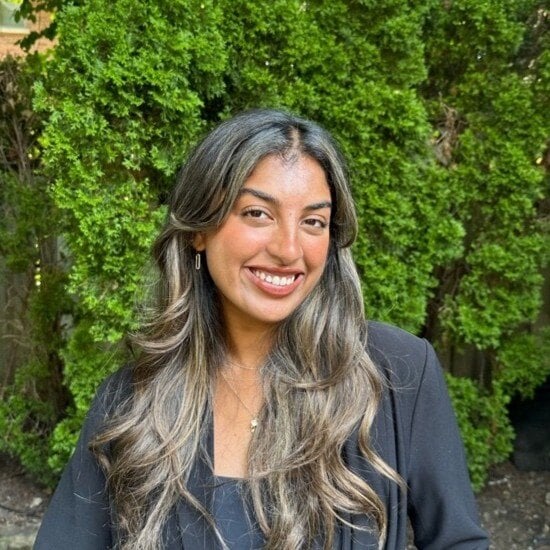As vehicles become increasingly connected, the industry has an unprecedented opportunity to turn real-time data into life-saving action. At this year’s American Automotive Summit, Jennifer Morrison, Director of Vehicle Safety Strategy at Mazda North American Operations, will share how connected-car insights are reshaping the way we think about crash prevention.
In her Lunch & Learn session, “From Data to Prevention: Using Connected-Car Insights to Proactively Reduce Crash Risk”, Morrison will explore how data-driven strategies can move safety beyond reactive measures toward proactive solutions that protect drivers before accidents occur.
Jennifer's session offers a forward-looking perspective on how the integration of connected technology and safety strategy can accelerate the industry’s progress toward a safer future. Keep reading to get a first look at what's to come!

Can you introduce yourself, and share more about your career journey leading up to
your current role as Director, Vehicle Safety Strategy at Mazda?
I’m Jennifer Morrison, Director of Vehicle Safety Strategy at Mazda North American Operations.
My journey in transportation safety began at NHTSA in the Office of Defect Investigations, followed by 15 years at the National Transportation Safety Board where I investigated over 70 major crashes. That experience transformed me from an engineer into a passionate safety advocate.
I joined Mazda in 2018, where I now lead safety compliance, ratings, and advanced safety research. My role is centered on aligning Mazda’s safety programs with evolving regulatory and industry trends, while championing our human-centric safety philosophy and vision of eliminating roadway fatalities.
How do you foster collaboration and alignment across diverse teams in safety and strategy initiatives?
Collaboration starts with building trust and shared purpose. At Mazda, I established and now lead our Vehicle Safety Strategy & Communications Department, integrating compliance, ratings, and advanced safety research. I ensure that engineers, strategists, and communicators are aligned not just on deliverables, but on the “why” behind our work. I also represent Mazda in cross-industry groups like PARTS and the Alliance for Automotive Innovation, where I help bridge gaps between OEMs, regulators, and researchers.
"Whether internally or externally, I prioritize transparency, active listening, and a commitment to shared safety outcomes".

How do you balance technical considerations with regulatory and consumer expectations when making decisions?
It’s a constant balancing act. Regulations provide a baseline, but consumer expectations and real-world safety demand more. I strive to understand the intent behind regulations and anticipate where they’re headed. For example, we often develop technologies ahead of formal rules, which requires interpreting fragmented guidance and forecasting future standards.
At the same time, I work to ensure our vehicles meet top safety ratings from IIHS, which are increasingly rigorous. Ultimately, I aim to deliver safety systems that are technically sound, regulatory-compliant, and provide an ever- heightening level of safety to consumers.
Looking back on your career, which roles or projects contributed most to your growth as a leader in the automotive space?
My time at the NTSB was foundational. Leading crash investigations taught me how to manage complex, high-stakes situations and communicate clearly under pressure.
At Mazda, being part of global teams that launched our first SAE Level 2 driver assistance system and that earned the Challenger of the Year R&D Award for our side impact barrier collaboration with IIHS were pivotal.
These projects required cross-functional leadership, innovation, and strategic foresight. They helped me grow from a technical expert into a strategic leader who can drive change across an organization.

Have you experienced a setback or failure in a project, and how did that experience shape your approach to future initiatives?
Absolutely. One of the biggest challenges I’ve faced is developing advanced safety technologies in the absence of clear regulations. Early on, the automotive industry launched systems that may have met technical goals but didn’t always resonate with consumers due to inconsistent naming and unclear functionality. That experience taught me the importance of human-centric design and clear communication.
Now, I involve cross-disciplinary teams earlier in the process, including marketing, legal, and user experience to ensure our technologies are not only safe but also understandable and trusted by drivers.
What personal strategies have you used to translate complex data into actionable safety decisions on the road?
I rely on storytelling through data. Whether it’s crash statistics or consumer feedback, I distill the information into narratives that highlight risk, opportunity, and impact. At PARTS, I helped publish our first reports on ADAS market penetration and effectiveness by translating raw data into insights that policymakers and engineers could act on. I also use visual tools—dashboards, infographics, and scenario modelling—to make data accessible.
"My goal is always to turn complexity into clarity, so decisions are informed and actionable.".
.jpeg?width=532&height=375&name=image-20231214-203020-edc4a729%20(1).jpeg)
What are you most looking forward to at the American Automotive Summit?
I’m excited to connect with fellow leaders and innovators who are shaping the future of mobility. I’m particularly looking forward to discussions around data sharing, regulatory modernization, and the integration of AI in vehicle safety systems. And of course, I’m eager to represent Mazda’s commitment to building safer vehicles and a safer society.
Don’t miss the chance to hear her expertise firsthand at the American Automotive Summit, taking place October 21–22 at the MGM Grand Detroit. Alongside Morrison’s Lunch & Learn, the summit will feature dynamic sessions, networking with senior executives, and actionable insights that will shape the future of the industry.
Join us in Detroit and be part of the conversation that’s driving automotive innovation forward.
For more information and registration details, visit usautosummit.com
%20(1).png?width=773&height=112&name=Generis%20Logo%20full%20Colour%20(Large)%20(1).png)

-Nov-13-2025-01-18-02-9699-PM.png)
-2.png)
.png)